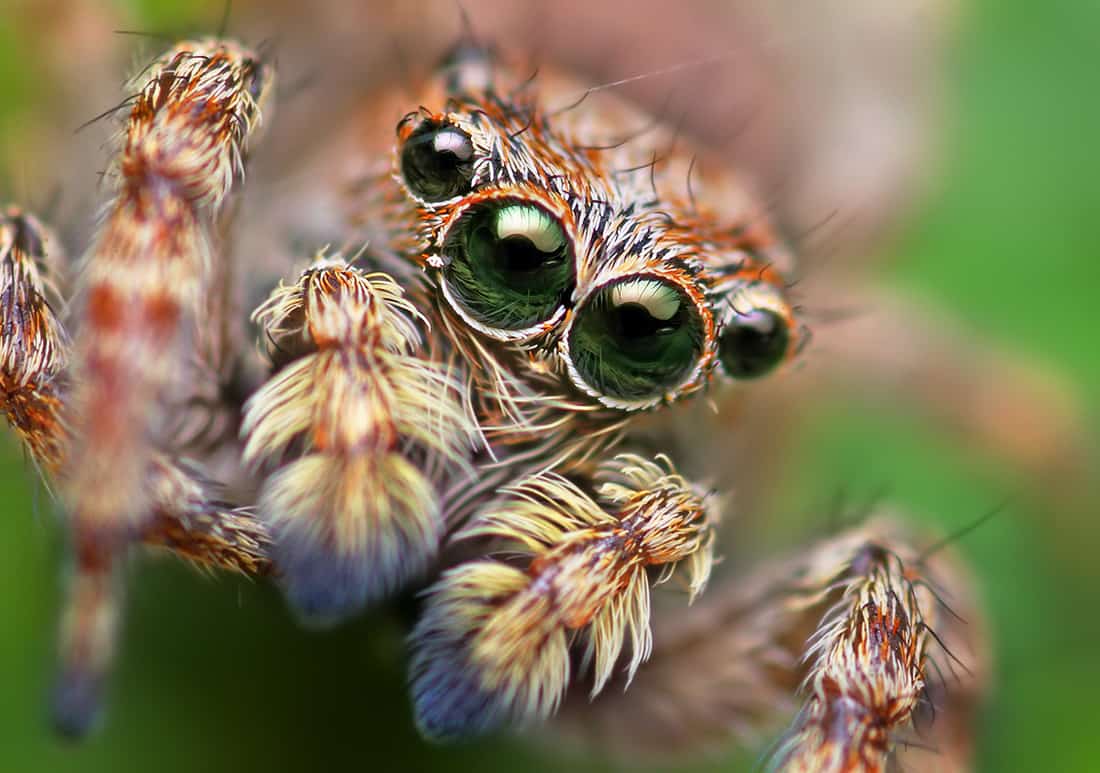When you think of smart animals, what’s the first species that pops into your head? Crows? Dolphins?
What about spiders?
Chances are, spiders wouldn’t be the first you’d think of. In fact, they probably wouldn’t even make it onto the list of possibilities. But the work of arachnologist Fiona Cross might just change that.
Fiona specializes in spider cognition, shining a spotlight on their impressive mental abilities. In this interview, we talked with her about some of her studies, and just what makes the minds of spiders so fascinating.
Q: You just kicked off a speaking tour, during which you’re travelling around North America and discussing spider cognition. Can you tell us some of the main topics you’re addressing in these talks?1
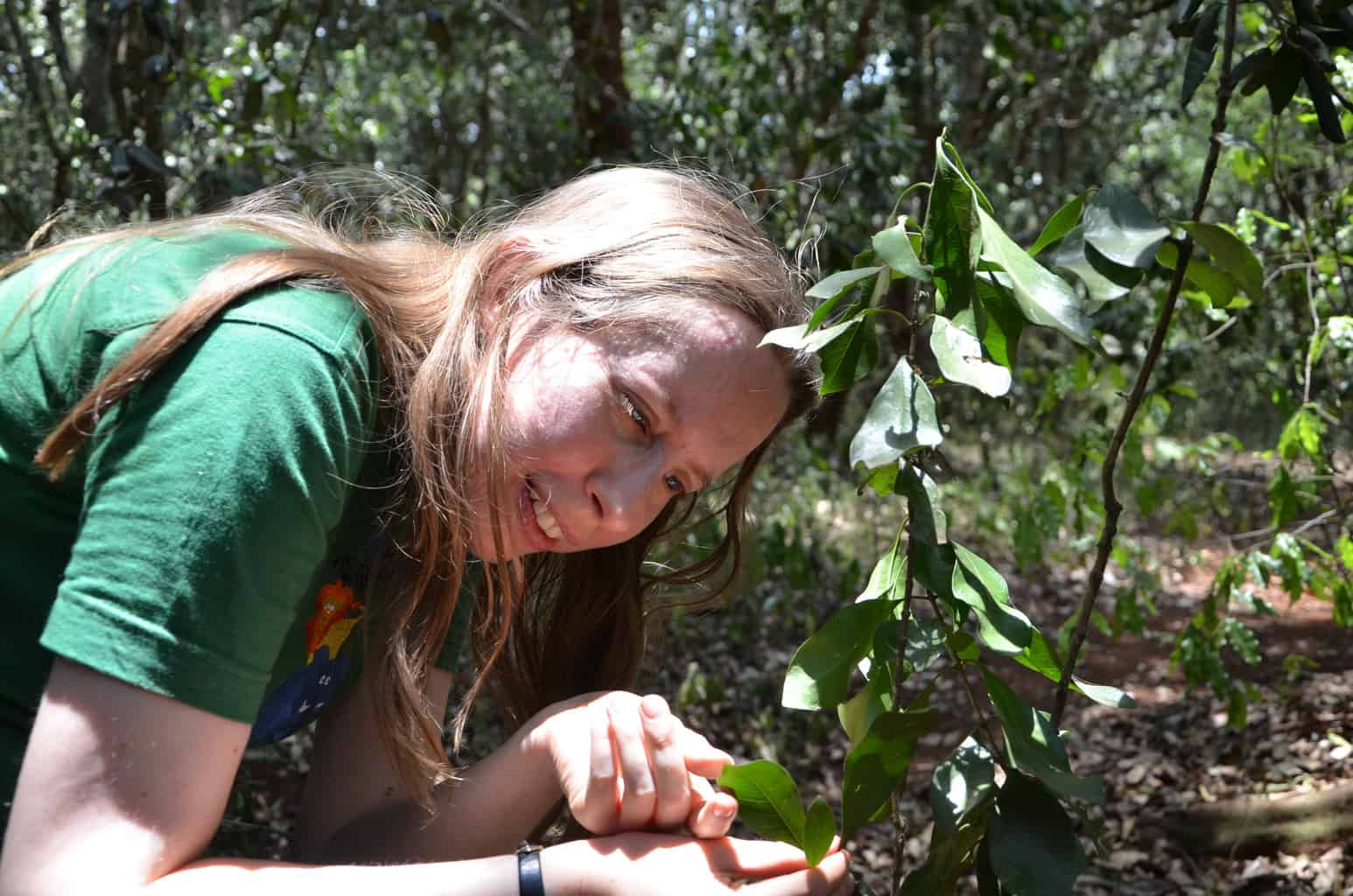 A: On my speaking tour, I will focus on talking about spiders from Kenya that specialize at preying on particular types of prey.
A: On my speaking tour, I will focus on talking about spiders from Kenya that specialize at preying on particular types of prey.
One of these species, Evarcha culicivora, prefers to prey on blood-carrying mosquitoes, while another species, Portia africana, prefers to prey on other spiders.
Both species have been of a lot of interest in the context of animal cognition – for instance, Portia needs to have a variety of strategies up its sleeve to avoid getting eaten by its prey.
Considering these strategies has opened the door to studying various cognitive topics, such as Portia making plans for reaching prey2 and Portia paying attention to prey number.3
Q: In a recent video, you revealed that you disliked spiders until you began to learn a bit about their behavior during your university studies. What was one particular fact that awakened your interest in them?
A: It’s true that I never intended to study spiders. My background is in Psychology and I assumed that only an animal with a big brain could be of interest, but I did start to realise that spiders could also be interesting when Prof. Robert Jackson began telling us in class about Portia.
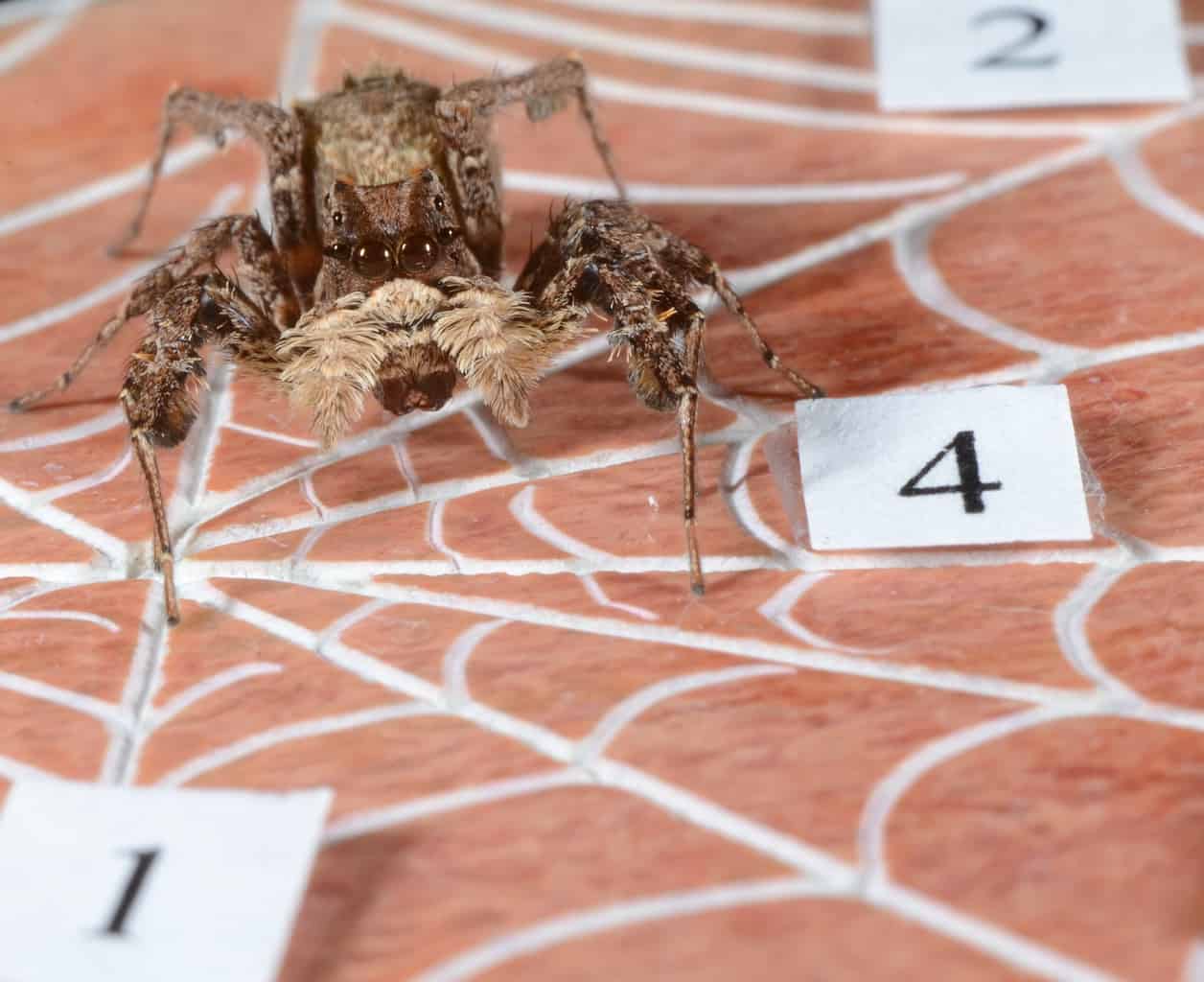 I thought it was amazing that Portia could take detours to reach vantage points for capturing its prey, for instance. And yet I still didn’t plan to work with them!
I thought it was amazing that Portia could take detours to reach vantage points for capturing its prey, for instance. And yet I still didn’t plan to work with them!
I did, however, become convinced when I found out that Robert had made discoveries about Evarcha culicivora, a spider from the Lake Victoria region of East Africa which specializes at preying on blood-carrying mosquitoes.
My mother was born in Zambia and nearly died of malaria when she was two years old, so I rather liked the idea of a predator that targets one of our enemies.
I decided to try working with this spider species for a few months, and I haven’t stopped, and I haven’t looked back.
Q: One of your studies involved testing Portia spiders’ ability to plan ahead. You did this by giving them the choice between two routes: one that would lead to their prey, and one that would not.
The spiders almost always chose the correct route. How is this proof that they could plan ahead?2
A: Portia africana is a salticid species (commonly known as a ‘jumping spider’), and can see remarkably well for an animal of its size. A typical feature of our work with jumping spiders has been presenting test individuals with lures (dead prey mounted in lifelike posture on pieces of cork) because jumping spiders will respond to lures as though these are living prey.
In this particular study, the trial started with Portia being presented with lures inside two boxes. In one of the boxes there were lures made from dead prey spiders and in the other box there were pieces of dead leaf.
We imposed a fast on the test spider before the experiment to make it more motivated to take the route leading to the prey lures. Once it began its journey, however, we removed the prey and leaf pieces from the apparatus.
This meant that the spider could no longer turn to see where the prey was located and instead had to rely on the plan it had made of where to go before it began its journey.
This might have seemed challenging and yet, in spite of no longer being able to view the prey, and in spite of how Portia sometimes had to walk past the incorrect route before reaching the correct route, the vast majority went the right way.
Q: You’ve also done some work on aggressive mimicry in spiders. Can you tell us more about what that is, and what its implications are for cognition?4
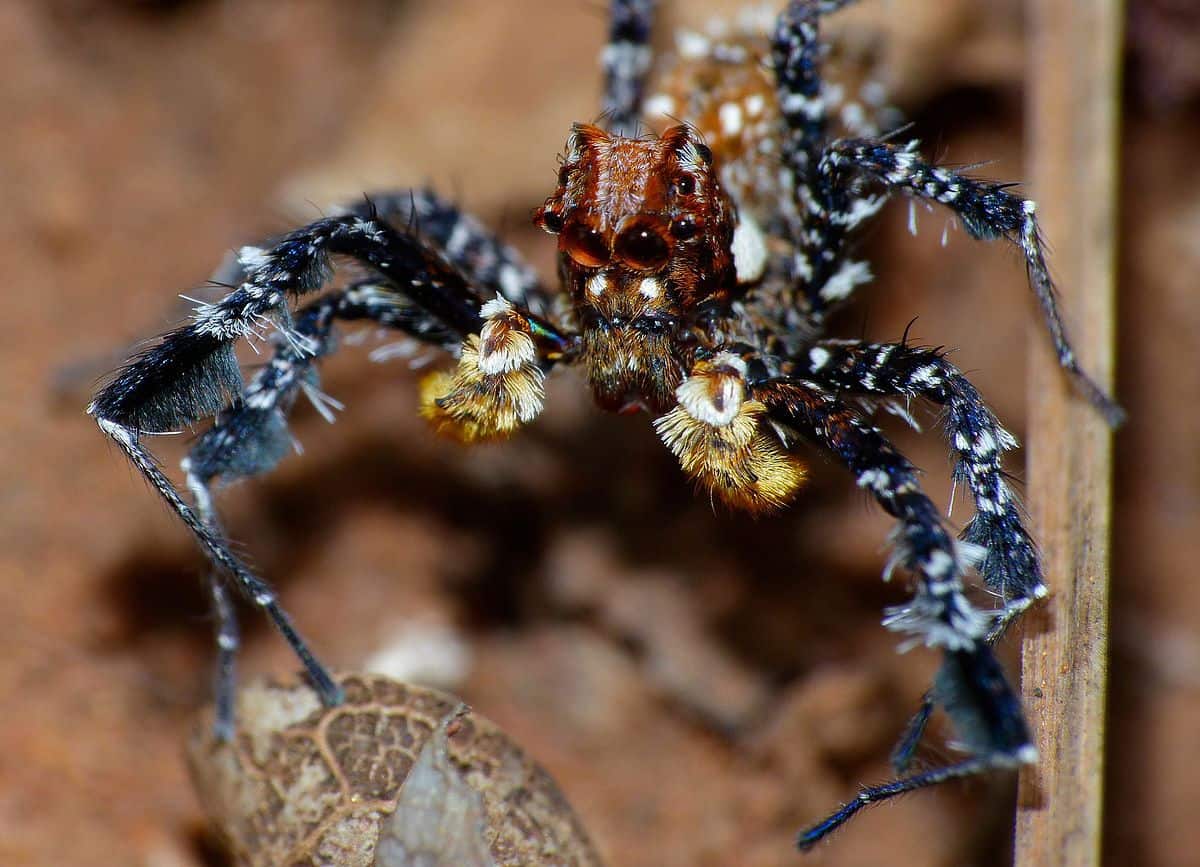 A: ‘Aggressive mimicry’ is a term used for instances when predators make signals that indirectly manipulate the behavior of their prey, with the response elicited being detrimental to the prey but beneficial to the predator.
A: ‘Aggressive mimicry’ is a term used for instances when predators make signals that indirectly manipulate the behavior of their prey, with the response elicited being detrimental to the prey but beneficial to the predator.
For example, when Portia reaches the edge of another spider’s web, it makes web signals by using any one or any combination of its eight legs and two pedipalps in ways that appear to resemble the movements of a trapped insect on the web.
This is a strategy that Portia uses in order to lure its prey over for the kill. However, Portia also varies these signals according to the type of spider encountered, such as by using trial and error to make signals that slowly lure in a more dangerous type of spider.
The outcome of such a strategy can have life-or-death consequences for both the predator and the prey. Success for the predator may often depend on being flexible rather than rigid, which means that the predator needs to have the capacity to make decisions and to use trial-and-error for tailoring a particular signal to a particular kind of prey.
In other words, the predator needs to have versatile strategies and be deceptive, which has important implications in the context of animal cognition.
Q: So using aggressive mimicry is a pretty risky strategy. It seems like there’d be a lot of evolutionary pressure on Portia spiders to become better and better at testing what works to lure in prey.
Has there been any recorded evidence of a Portia population becoming more successful at aggressive mimicry over the span of many generations?
A: We don’t have records of Portia becoming more successful over generations, but there is evidence that populations that face riskier prey are more successful at making particular signals than those from populations where the prey are less “risky”.
Q: Are there any big spider cognition questions you’re planning to study in the future?
A: The “problem” with working with spiders is that when we investigate one thing, we realize that this opens doors for many other avenues of exploration!
For example, in Portia’s natural habitat, we have noticed that these spiders often encounter other Portia individuals (i.e., competitors) as well as their prey. We have already investigated whether Portia pays attention to the number of prey it encounters, but one thing we are exploring at the moment is whether Portia pays attention to competitor number as well.
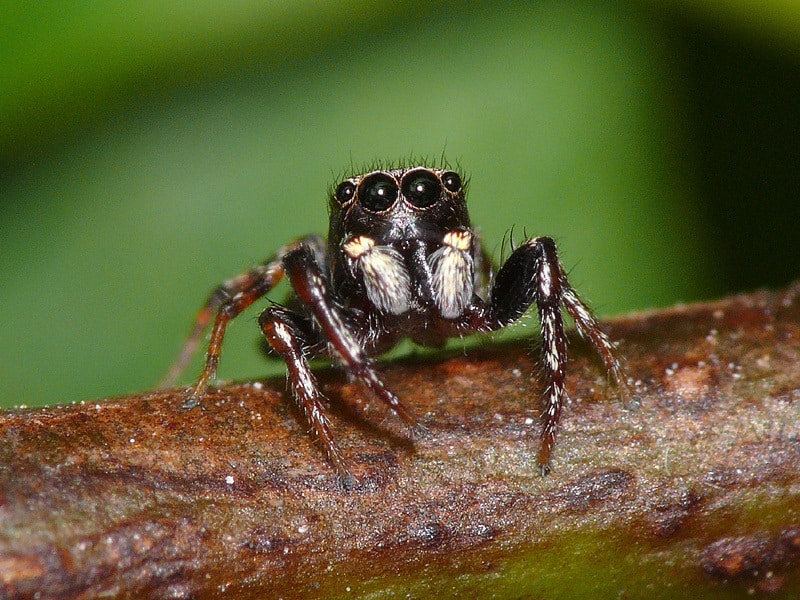
Q: That sounds really interesting. If Portia spiders were to pay attention to the number of competitors present in their territory, how could you tell? Would you expect it to affect their hunting strategies?
A: What we’ve found so far is that Portia becomes less inclined to complete a detouring task if we change competitor number while it’s taking the detour.
Competitors are potentially cannibalistic, and prey spiders are also potentially dangerous, so being able to pay attention to the number of both types of individual in the vicinity may well be an important survival strategy for Portia.
Q: What’s the most important thing you think the world should know about spiders and their cognitive abilities?
A: I used to think a spider couldn’t possibly be of interest in the context of animal cognition because of how it is a small animal with a small brain. The spiders we work with, for instance, have brains that would sit comfortably on pinheads.
And yet, despite being so small, we can see predatory strategies and cognitive abilities that rival those of much bigger animals.
I would like to help people to appreciate how wonderful spiders really are. While I know that many people fear spiders (and I used to fear them as well), it can be really helpful to understand what these animals can actually do. These animals give us so many opportunities for discovery right around us.
—
If you want to learn more about Fiona’s work studying spider cognition, you can follow her on twitter at @drspidernz. You can catch the last events in her speaking tour on April 19th at CUNY Brooklyn, and April 27th at the University of Florida.
Sources
Title image by Opo Terser
1 – Fiona Cross: Spider Cognition Speaking Tour
2 – Fiona Cross, Robert Jackson
The Execution of Planned Detours by Spider-Eating Predators
Journal of the Experimental Analysis of Behavior
3 – Fiona Cross, Robert Jackson
Representation of different exact numbers of prey by a spider-eating predator
Interface Focus – Convergent minds: the evolution of cognitive complexity in nature
4 – Robert Jackson, Fiona Cross
A Cognitive Perspective on Aggressive Mimicry
Journal of Zoology
5 – Robert Jackson, Fiona Cross
Spider Cognition
Advances in Insect Physiology

